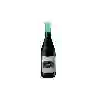
Domaine Rière CadèneBouquet de Saint-Jean Côtes Catalanes
This wine generally goes well with
Details and technical informations about Domaine Rière Cadène's Bouquet de Saint-Jean Côtes Catalanes.
Discover the grape variety: Folle blanche
As its name suggests, the folle blanche is a white grape variety. Originally from the west of France, it was used to make Cognac and Armagnac brandies as early as the 17th century and was renowned for its finesse and fragrant nose. Replaced by Ugni Blanc following the phylloxera invasion, the folle blanche is now grown in small quantities. It is a grape variety with juicy, sweet, medium-sized bunches and berries with a white/green skin. Its worst enemy is grey rot. As it is an early variety and its buds come out early, it is particularly afraid of spring frosts. It likes short pruning, a method that limits the production of grapes but increases their quality. It also prefers mineral-rich soils, and its vineyards cover about 3,000 hectares. It is used in the production of the AOC Gros-plant du Pays nantais to produce a lively white wine with little alcohol but marked acidity.
Informations about the Domaine Rière Cadène
The Domaine Rière Cadène is one of of the world's great estates. It offers 27 wines for sale in the of Côtes Catalanes to come and discover on site or to buy online.
The wine region of Côtes Catalanes
The wine region of Côtes Catalanes is located in the region of Pays d'Oc of Vin de Pays of France. Wineries and vineyards like the Château de l'Ou or the Domaine Department 66 produce mainly wines red, white and pink. The most planted grape varieties in the region of Côtes Catalanes are Mourvèdre, Viognier and Cabernet-Sauvignon, they are then used in wines in blends or as a single variety. On the nose of Côtes Catalanes often reveals types of flavors of grapefruit, saline or pink grapefruit and sometimes also flavors of watermelon, nectarine or wax.
The wine region of Pays d'Oc
Pays d'Oc is the PGI for red, white and rosé wines that are produced over a wide area of the southern coast of France. The PGI catchment area corresponds roughly to the Languedoc-roussillon">Languedoc-Roussillon wine region, one of the largest wine regions in France. The area covers all wines that are not produced under the strict laws that govern AOC-level appellations in the regions: among them, Corbières, Minervois and the Languedoc appellation itself. The Pays d'Oc PGI is arguably the most important in France, producing the majority of the country's PGI wines.
The word of the wine: Baco 22A
A white grape variety resulting from the hybridization of the folle blanche and the noah. It is the only hybrid to remain authorized in a French appellation vineyard, that of Armagnac, where it thrives in particular on the tawny sands of Bas-Armagnac. When distilled, its wine produces round, smooth and aromatic eaux-de-vie with hints of ripe fruit.













